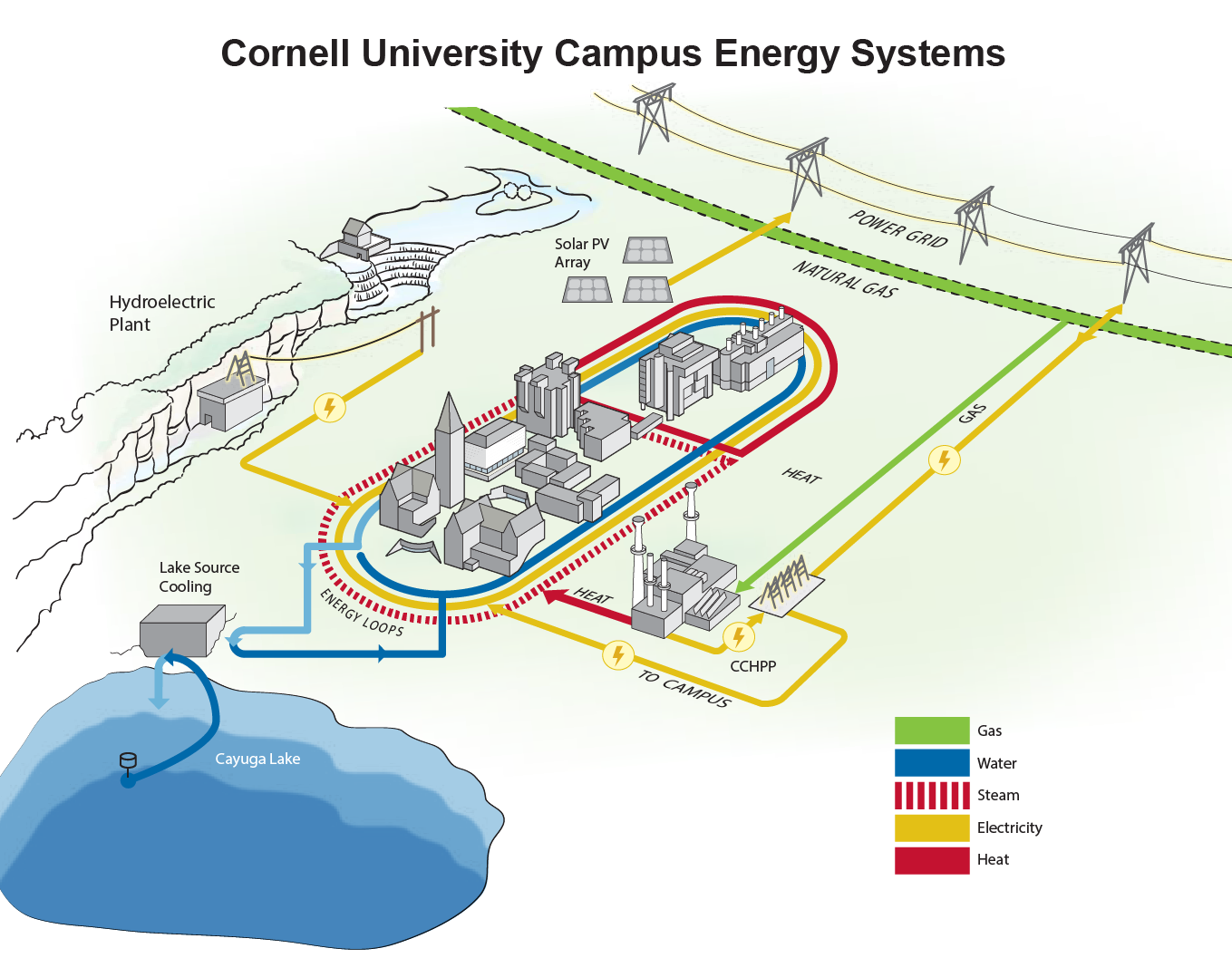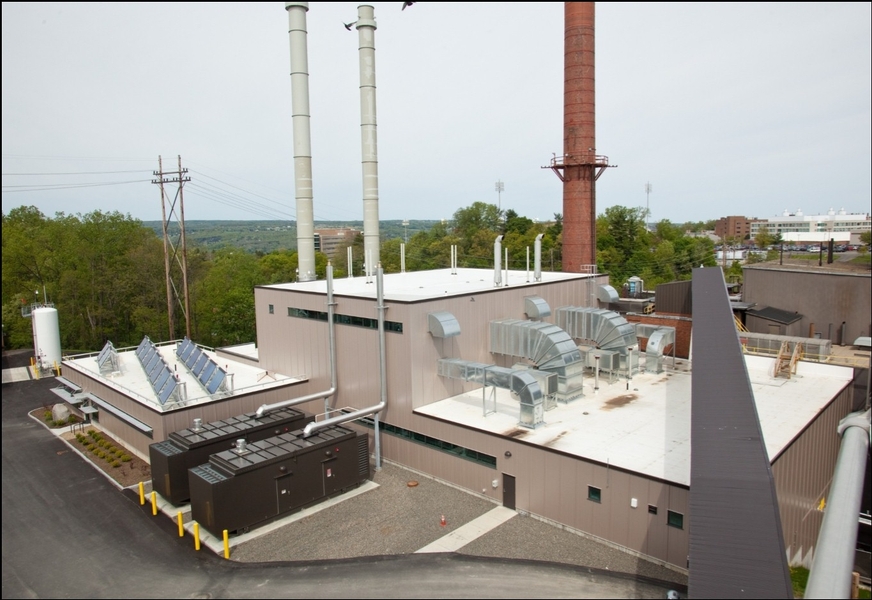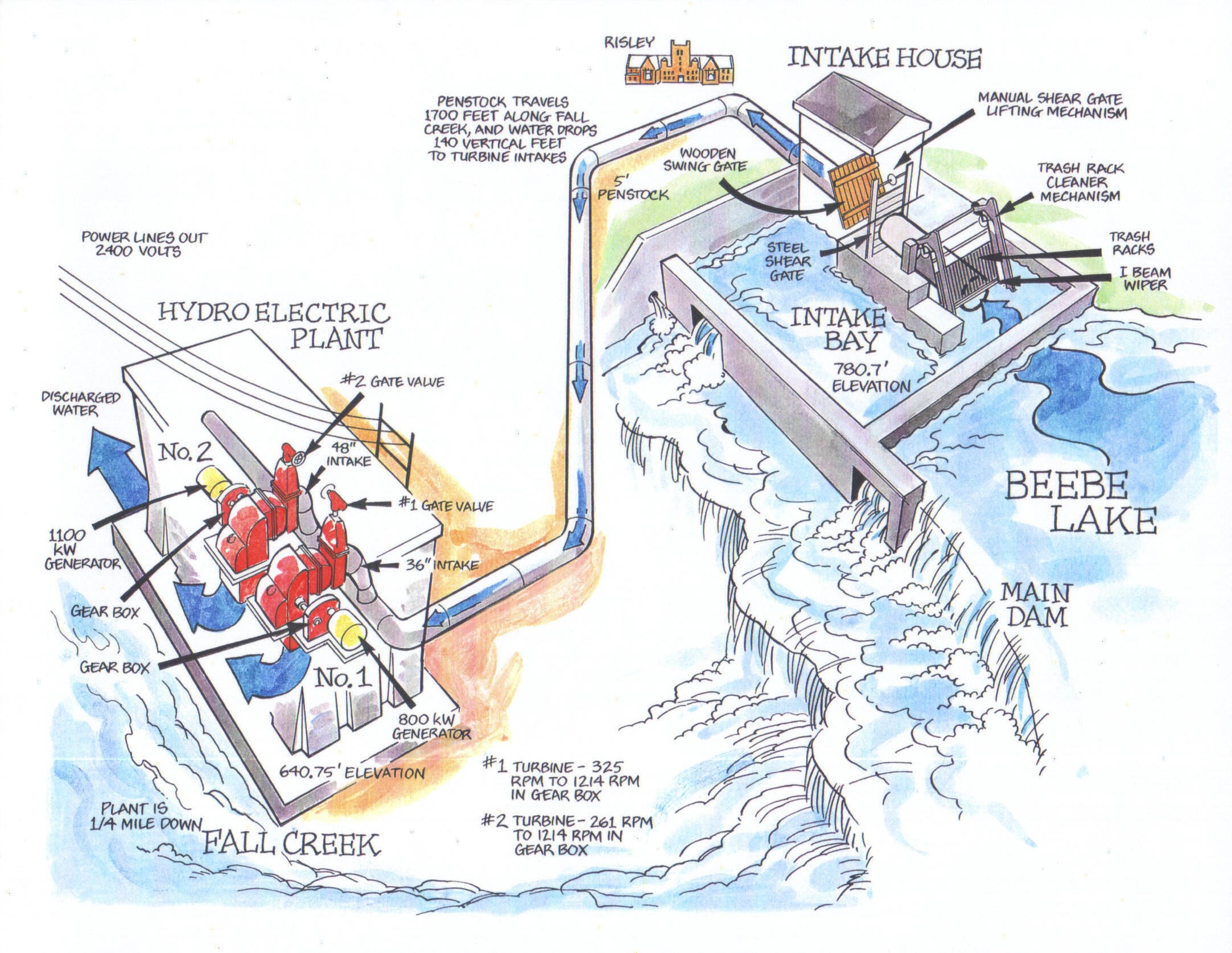Campus Energy Systems
Our commitment to sustainable energy has made the Cornell Ithaca campus a pioneer in energy conservation and renewable energy supply. By using green energy to power the campus, we can secure a low-risk future for our operations and develop New York State's green economy.
Energy Systems Overview
Cornell University is committed to demonstrating the future of renewable energy operations through a comprehensive overhaul of our energy systems. Our heating, cooling, and power needs are undergoing rapid transformation to achieve carbon neutrality by 2035 and power the campus with 100% renewable energy. The Ithaca campus uses ~1/1000th of New York State’s electricity load, making our systems ideal testbeds for demonstrating energy solutions.
Currently, the campus is powered by a highly efficient district energy system being transitioned to renewable energy sources which include:
-
Power and heat provided by the LEED Gold-certified Combined Heat and Power Plant
-
Interconnected renewable energy systems including solar farms, on-campus solar systems, and the 115-year-old hydroelectric plant on Beebee Lake
-
The Lake Source Cooling plant which provides clean, renewable cooling to Cornell and Ithaca High School
-
Future plans for Earth Source Heat
-
An emphasis on Energy Conservation Projects
Beyond Coal Historical Transition
When Cornell committed to carbon neutrality in 2007, the campus chose to transition quickly from coal to natural gas, a lower-carbon energy source for campus heat and power. Cogeneration (the combined heat and power plant) was selected due to the lowest life cycle cost, fuel flexibility, reliability, and greenhouse gas emissions reduction. At the time, the Cornell administration knew that this step would act as a "bridge" to a renewable energy future and committed to a renewable-energy and carbon-neutral future as soon as possible.
Learn more about this historic phase of our energy systems transition in Beyond Coal.
Energy Systems & Sustainability Details
Combined Heat and Power
The Combined Heat and Power Plant (CHP) uses the simultaneous production of electricity and utilization of “waste” heat for campus heating.
Sustainability Benefits
Commonly known as ‘cogeneration,’ combined heat and power is a way to increase the efficiency of power plants. Standard power plants effectively use just 40 percent of the fuel they burn to produce electricity. The remainder of the fuel ends up "wasted" up the smokestack. Some of the sustainability benefits include:
-
Ability to 'island' and provide all campus power needs during power outages
-
25% carbon reduction over energy system, saving 70,000 tons of CO2e annually
-
Cleaner air and better for human health, reducing NOx 250 tons/yr, SO2 800 tons/yr
-
Fuel flexibility and lowest life cycle cost
-
Ability to offer 15+ tours to students and faculty each year
The plant is powered by natural gas, a fossil fuel that contributes to climate change. Cornell plans to transition the current CHP to part of an integrated renewable energy system which will include Earth Source Heat, on-site and other renewable energy sources, and continued deep investments in energy efficiency.

Lake Source Cooling
The Lake Source Cooling (LSC) project is one of the most significant energy initiatives ever undertaken by an American university in order to promote sustainability.
Beginning in July of 2000, after a 4-year application review process by the New York Department of Environmental Conservation (DEC), LSC is an environmentally sustainable upgrade to the chilled water system on campus, conserving energy by utilizing the cold waters of Cayuga Lake.
Sustainability Benefits
This method of cooling eliminates the need for refrigeration equipment, significantly reducing Cornell’s reliance on fossil fuels by using approximately 85% less energy.
Furthermore, not only is LSC much more cost effective, there is also greater reliability and benefits for the environment in the long run. Because the system needs no refrigerants and is so efficient, it significantly reduces the greenhouse gas emissions typically associated with large cooling systems. In accordance with DEC requirements, Cornell also included several features in the construction and operation of the LSC project to further minimize any potential impacts.
Hydroelectric Plant
Cornell's hydroelectric plant has been providing renewable energy to the Ithaca campus for over 115 years
In 1904, the present plant in Fall Creek Gorge was built to provide electric power to the campus and City. Water is supplied to the plant from Beebe Lake, and the central intake which generates power has been updated several times in the past century to improve energy performance.
Hydroelectric Plant Facilities Page
Sustainability Benefits
- Naturally occurring on-site water power provides reliable energy to campus
- Upgrades to the plant's efficiency in the 2010s increased plant production to 2% of Cornell's total energy needs
- This hydroelectric plant is "run of river," which means that no water is stored, thereby reducing ecological impacts
Cornell is striving to power the Ithaca campus with 100% renewable energy by 2035 as part of our commitment to carbon neutrality. We develop renewable energy resources that benefit our campus, community, and New York State, with an emphasis on large-scale solar farms and community solar projects.
Over 20% of campus electricity needs are met by our solar projects, though renewable production regularly meets 100% of campus demand on sunny, high-producing days year-round.
Learn About our Solar Projects
More than 15 solar projects and counting...
Where are our solar farms and on-campus projects? Find them on the Sustainability Map



